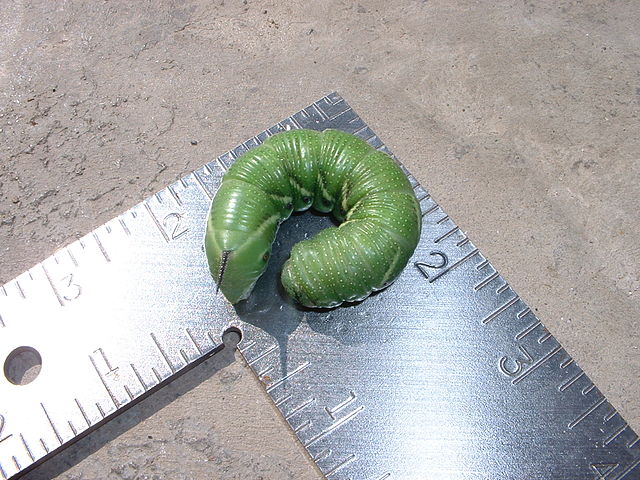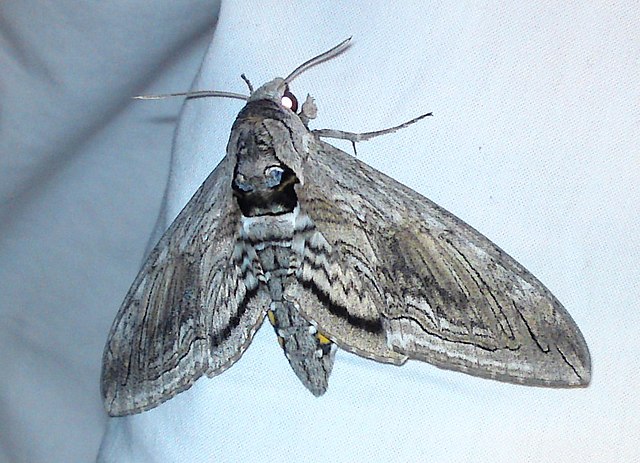By David Wall, Mt. Pleasant Master Gardener
Anyone who has grown tomatoes knows the dangers of the tomato hornworm (Manduca quinquemaculata). It is also known as tobacco hornworm with the only distinguishable difference between the two being the color of the horn, which resembles a stinger (black for tomato and red for tobacco). This caterpillar, which can grow to 3-4 inches virtually overnight.

Because they are so destructive so quickly, adult sphynx moths usually lay only one egg per plant. Loss of foliage is noticeable after 24 hours and the caterpillar can denude the plant in 2-3 days. Body color is bright green with white diagonal stripes across he back.
It should be noted that while gardeners most often see their resulting damage of tomato plants, they can also go after potato, egg, and tobacco plants as well as some weeds!
The caterpillar blends very nicely with the tomato plant and is difficult to find. And they are voracious eaters. It’s possible for a caterpillar to almost completely de-leaf a tomato plant before retiring to the soil where it will pupate into a sphynx moth. The only way I’ve found that works is to start with a branch already eaten bare and s-l-o-w-l-y work back toward the base of the plant. The problem with this is that, for me, this is only about 50-60 % successful.

There is, however, another way to find it/them that works very well. While we see the damage under sunlight, the caterpillars do most of their work at night. So, get yourself an ultraviolet light, and head out to the garden well after dark. Hornworms “glow” under the light and can easily be seen. Often, you’re looking for one worm but will find two or more.
Adult sphynx moths are good pollinators having a long proboscis that can reach in deep-throated flowers.






